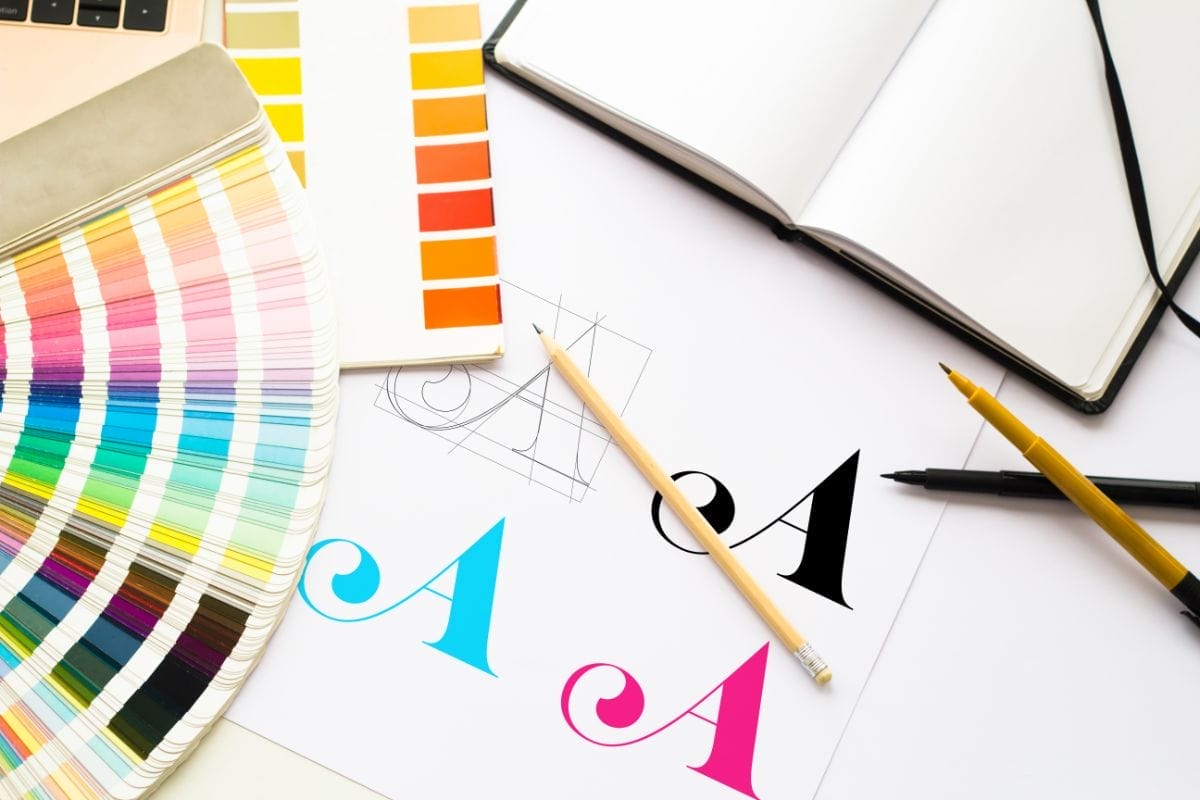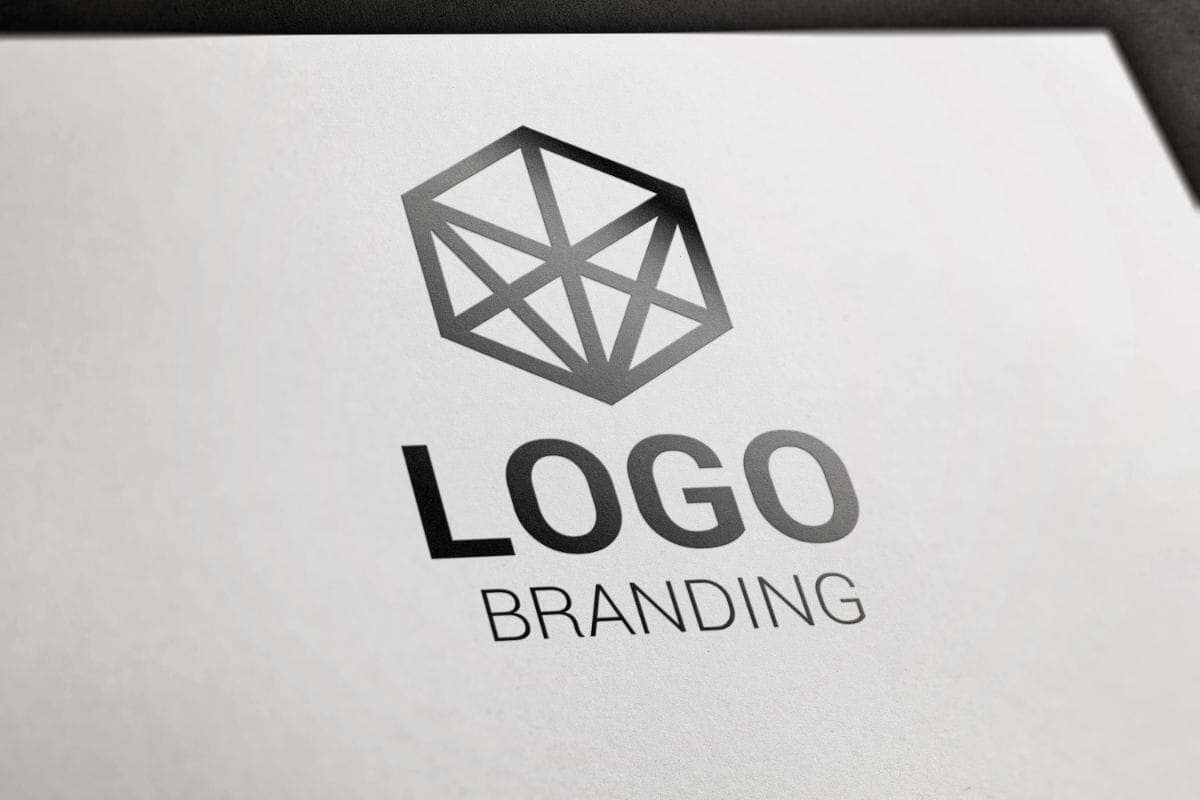Many people who want to create a logo for their business or even for their blog to show off their brand will question how they can do it.

One way that has been suggested is by using stock images, perhaps by using one of the many free image databases available online.
However, it’s not always the best idea to do this. If you’re considering making a logo using stock images, read our guide below first!
What Are Stock Images?
Stock images are images which have already been created and used in other projects. They may be royalty-free images (which means no copyright restrictions) or they may be copyrighted images.
The latter ones are usually only available if you pay for them. You can also find images on websites such as Shutterstock, Fotolia, iStockphoto and others.
These sites offer a huge selection of royalty-free images at very reasonable prices.
Can I Use Stock Images To Create A Logo?
This is really a yes and no answer. In truth, you should avoid using stock images to make your own logo.
This is because many content usage agreements prohibit you from doing so, and if you choose to do so anyway – you could risk a very hefty fine.
In fact, some of the websites we’ve listed above actually have clear guidance on this stating that even if you use a stock image in part to create a logo, you may be breaching the terms of use.
However, there are some sharing sites that will allow you to do so, providing that you alter the image enough to make it unique. It really depends on how and where you’re sourcing the original image.
How Else Should I Make A Logo?
Creating a logo isn’t always easy. It requires uniqueness, and it needs to be identifiable to your brand or business.
Here’s the process you should go through and things to think about when it comes to making your own logo.
What Is Your Brand?
Before you start creating your logo, you need to know what your brand is all about. Do you sell products or services?
Or maybe you run an organization? Whatever it is, you need to understand what makes your brand different from everyone else’s brands.
If you don’t know what your brand stands for, then you’ll struggle to come up with something truly distinctive.
So, before you begin designing your logo, take time to define your brand. What does it stand for? Who is its target audience? How would someone recognize your brand?
Brainstorm
Once you’ve got these questions answered, brainstorm ideas for your logo. Start by thinking about the design elements that you’d like to include in your logo. Think about colors, shapes, fonts, etc.
You might want to consider using a font that represents your brand name or company name, but remember to keep it simple. Don’t go overboard with the typefaces, just stick to one or two.
You might also want to consider adding a symbol into your logo. Symbols can help people identify your brand more easily.
So, if you’re selling coffee, you could add a cup of coffee into your logo. Or, if you’re running a charity, you could add a heart into your logo.
Think About The Design Process

Once you’ve defined your brand, you need to decide how you’re going to design your logo.
Knowing the difficulty and complications of using stock images, you’ll have to choose another way. There are two main ways:
- By hand
- Using software
We recommend starting with the second option, but either way works well.
You should consider whether you’d like to work digitally or traditionally. Digital tools such as Adobe Photoshop and Illustrator are great for working with vector graphics.
Vector graphics are scalable, meaning you can resize them without losing quality. This makes them perfect for logos.
You can also use traditional methods such as pen and paper, pencils and pens, or even clay.
It’s important to remember that you won’t necessarily need to use just one method. If you’re not sure which method to use, try both and decide which you think works best.
Some people prefer digital designs while others prefer traditional techniques. Either way, you need to find a style that suits you.
It’s also worth noting that you shouldn’t rush into creating a logo. Take your time and get it right. The more thought you put into the design process, the better the final result will be.
However, it’s essential that you recognize that you might not get “the one” on your first attempt.
This is why it’s a good idea to make multiple logos and make a decision with a team, or even test it with others as a “pilot” and get feedback.
The Importance Of Color
Color plays a big role in branding. You need to ensure that your logo uses colors that match your brand identity.
Colors aren’t only used to convey information about your brand; they’re also used to help customers identify your brand. They can also help you build trust by giving your brand a personality.
There are many color schemes available, each with their own benefits. Some examples include:
- Monochrome (black and white)
- Grayscale (white and black)
- Primary colors (red, blue, yellow)
- Secondary colors (orange, green, purple)
- Tertiary colors (pink, brown, light blue)
Once you know your product, service and overall tone – the colors should work to compliment this.
When choosing colors, keep in mind that there’s no ‘right’ color scheme. It’s entirely down to personal preference.
It’s Okay To Get It Wrong
Many famous companies and brands fail with their first or even second logo choices. This is when rebranding comes into play.
If you’re not artistically inclined, or you cannot use the software that we’ve described above, you may wish to opt for a graphic designer to give you some ideas.
Using A Graphic Designer
You may think this is a costly endeavor. It doesn’t have to be though. There are many freelance graphic designers that you can find online.
All you will need to do is give them your ideas and overall vision for a logo and let them take care of it. This can be a great way to do it if you don’t have the “designer” mindset.
However, it’s important to note that you may need to provide credit for their design, unless you’ve signed a specific contract stating otherwise.
Can I Use Stock Images For Other Commercial Use?
This will depend on the license and where you’ve sourced the image from.
For example, some images taken from Google’s Creative Commons Image Search are free to use for commercial purposes, but you need to check this.
Images taken from stock photography sites such as Shutterstock are usually licensed under creative commons’ attribution.
In either case, make sure you read the terms and conditions before using any image.
The Bottom Line
Using stock images to make a logo is not advised, but it doesn’t mean that you can never use them.
The fact is, if you want to avoid a conflict – you should try to create your own logo using software or simply by using pen and paper!
Whichever method you choose, we wish you luck with your logo!
- Can We Use Envato Elements On Youtube Videos - July 15, 2022
- What’s The Highest Quality Image Format? - July 15, 2022
- Pexels Reviews: Is Pexels Legit? - July 15, 2022








